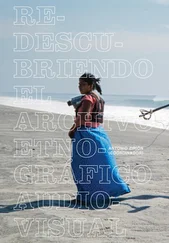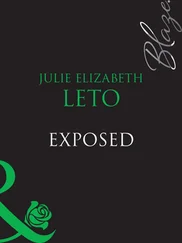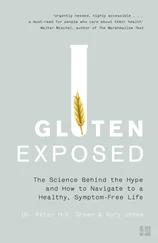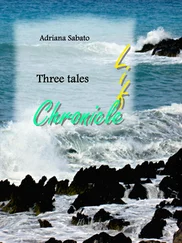This model of government provides a useful counterpoint for understanding Soviet and post-Soviet responses to Chernobyl and their social and scientific arrangements. In both responses, state power is as concerned with making bodies and behaviors ever more predictable and knowable as it is with creating—both intentionally and inadvertently—spaces of nonknowledge and unpredictability. The biology of populations is held in question; the government of life is unmoored. Where Soviet officials generate medical statistics, they designate them state secrets. People become uncertain as to what medical categories they belong to, how sick or healthy they are. Given the array of scientific and medical uncertainties, old measures of suffering lose their meaning and validity. Into that void come new biological definitions, some by chance, others by design. Some individuals with certain symptoms are said to be sick, while others, with different symptoms, are said to be not sick. Statistics and the use of medical diagnostics become contested. As these governments grapple with creating zones of predictability and intelligibility where they can operate and increase welfare, citizens are faced with what seem like random instantiations of scientific measures, biomedical categories, and compensation criteria. According to international experts in the field of nuclear medicine, the death toll from Chernobyl is thirty-one. According to local experts, the figure is in the hundreds of thousands. Radiation safety norms demarcate contaminated from presumably safe territories, but are those norms too liberal or too conservative? The area of contaminated land shrinks, then expands, then shrinks again. As a result, some rural populations are resettled once, then again, only to return to the area from which they resettled (see chapter 4). There is an absence of maps indicating the spread of contamination; then, in the Ukrainian period, an array of maps appear—unofficial maps, state maps, revisions of state maps. In short, daily life is characterized by overwhelming uncertainty and unknowability. It is in this social, scientific, and legal arena that defining and acquiring a biological citizenship takes on central interest.
• • •
Today, relations between the human body and populations are again being recast in the context of the life sciences revolution. The Chernobyl disaster happened at a time when there was considerable change in research priorities in the world of international science. [19] The United States Department of Energy initiated the Human Genome Project the same year that Chernobyl happened. See, for example, Cook-Deegan 1994.
Knowledge of the genetic code and how to technically manipulate it is not only transforming public health practices but influencing national politics, global commerce, and medical ethics, as well as conceptions, experiences, and politics of health and disease. In conceptualizing new social groupings in the context of the Human Genome Initiative in the United States and in France, Paul Rabinow examines how genetic knowledge and techniques are bringing about a literal redefinition of self and social identity, what he calls “biosociality.” [20] “In the future, the new genetics will cease to be a biological metaphor for modern society and will become instead a circulation network of identity terms and restriction loci, around which and through which a truly new type of autoproduction will emerge, which I call ‘biosociality’ ” (Rabinow 1996a:99).
As genetics-based diagnostic tools refocus health care away from direct clinical intervention to risk factor analyses and prevention, patients are engaging in health-promoting behaviors that may help prevent future illness; thus they elude their genetic “fates.”
The social and behavioral changes implicated here (from face-to-face medical encounters to databased assessments of individual risk factors) do not necessarily imply a new medical impersonalism. Far from it. They engender novel social groupings bound by the hopes, fears, fates, and politics that have been made available to sufferers on the basis of biological knowledge. Three points follow from this recasting of biopower and are relevant to this investigation of the Chernobyl aftermath. First, the linking of biology with identity is not new. What is new is how connections between biology and identity are being made. In contrast with older and discredited biologized categories such as race or ethnicity, which in the past reinforced political programs and continue to foster patterns of unequal medical access and social injustice around the world (Proctor 1988, Lewontin 1992, Farmer 1999), these “new” biological identities and the interest groups formed in their name now have the potential to drive political economies and forms of commerce, as in Iceland (Palsson and Rabinow 1999); to foster identity-based illness movements, as in the United States (Dumit 2000); to generate new affective disorders, as in Brazil (Biehl 2001); and to become central to contemporary forms of citizenship. Such transformations illustrate the extent to which explanations and claims of health and their failures are understood within the scientific, economic, and political domains in which they are coming to be addressed. A third point follows. In such domains, pain and suffering are experiences that are being rationalized and to some extent made into social instruments. This is not to say they are any less authentic, but that new determinations and values are being attached to them. Acts of suffering can carry stakes beyond themselves, organize social behaviors, and inform policy actions regarding welfare and insurance, health care delivery, and courses of scientific investigation and its funding.
Historians of science have commented on the irony of such dynamics of suffering in that “the process of pathogenesis [becomes] so complex that discussions of cause necessarily become a socially constructed domain” (Brandt 1997:67; also see Proctor 1995). Recent ethnographies of science have vividly portrayed how, more and more, biomedical technologies play a pivotal role in that social constructedness. Sonograms, PET scans, and genetically based diagnostics, by their imaging of biological facts, are inseparable from the objects they recognize and remake as disease (Martin 1994, Rapp 1999, Kleinman 1988). Research into the constructedness of pathologies expands well beyond biomedical circumstances to include diverse forms of violence that can significantly threaten health. Institutions sanctioned to respond to social problems—legal, welfare, and medical—organize distinct programs and policies that can result in distinct courses of health and disease (Das 1995, Kleinman and Petryna 2001). [21] Veena Das has illustrated the ways pain and suffering are rationalized within state mechanisms and affected societies. In the case of India’s Bhopal chemical disaster, state health professionals and bureaucrats de-authenticated the suffering of victims by insisting that objective measures replace self-reports of victims as means of assessing the consequences of chemical exposure. Something similar happened in the Soviet administration of the Chernobyl disaster. As an effect, pain and suffering “may also be experiences which are actively created and distributed by the social order itself” (1995:138). See “Suffering, Legitimacy, and Healing: The Bhopal Case,” in Das 1995.
The social making and expansion of populations at risk for disease is also determined by what Paul Farmer has identified as patterns of “structural violence.” Lack of health care, limited treatment interventions, and persistent social inequalities that are intensified by structural adjustment programs have led to worldwide epidemics of preventable infectious diseases such as multidrug-resistant tuberculosis (Farmer 1999).
Читать дальше












